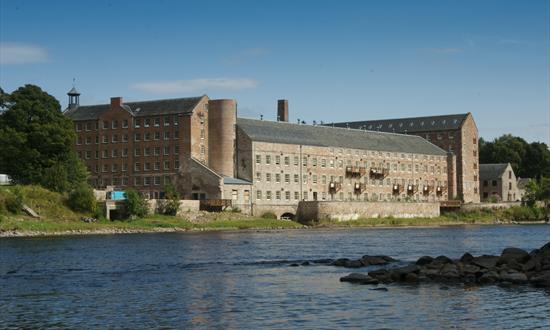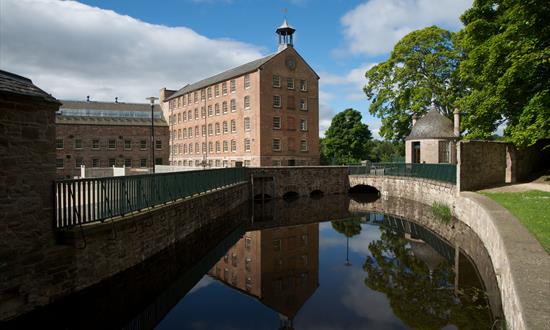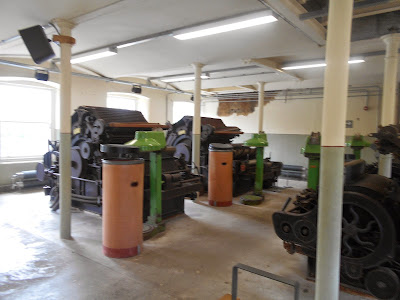Stanley Mills were founded over 200 years ago by a group of Perth merchants with technical and financial support from Richard Arkwright, the 'father' of the English cotton industry. Textiles were manufactured here almost continuously from 1787 until 1989. As demands changed and technologies developed, buildings were added, adapted, expanded, destroyed by fire, rebuilt, shut down, reopened and demolished. Machinery came and went, powered initially by water wheels and later by electricity generated by water-powered turbines on the site.
Today we explored the building and tried our skills at working at the mill as a worker and then as a manager.


It sits on a peninsula formed by a hairpin bend in the River Tay. The Tay is the fastest flowing river in the UK and drops 21 feet as it snakes around the peninsula. A tunnel had been driven through the peninsula as early as 1729 to power a corn mill. The cotton mill was built in 1786 at the beginning of the Industrial Revolution. The nearby village of Stanley was established around the same time to provide accommodation for the work force.
These two buildings have been restored and are selling now as flats. The cost for a 2 bedroom flat here is 127,000 pounds.It is a beautiful, serene area.
 |
| This is the road to the town that the workers would travel twice a day. |
 |
| When one spool was empty it would have to be replaced quickly. |
 |
| If the string broke it would have to be replaced back in the hole by nimble fingers. The work force was 885 strong with 540 female and 497 under 18. The children would finish work and then attend the company school. Many health issues came from working here because of the constant cotton in the air. |
 |
| The raw cotton was bought on the Glasgow cotton exchange. Gifts of Tay salmon were given to sweeten the deals of cotton. The American Civil War from 1861-1865 lead to a closure because of a cotton famine. |
 |
| The machines in the carding room date from the 1950's. They are the only cotton machines in Scotland that are still in their original positions. The noise of the machines made normal conversation impossible so the workers developed a system of sign language to convey simple messages like the time of day or warning of the presence of the foreman. |
 |
| This display showed how the water powered the machinery. |
 |
| The work day started at 5am and went for 12 hours. Saturday was 9 hours. They had 2- 45 minute meals. One at 9 and one at 2. Most of the people went home for the food. They had two days of unpaid holiday a year. Sundays they were off and were not obligated to attend church. However if they were less than 15 years of age they got free seats. |
 |
| Hats would protect their hair and the aprons their clothing, from being caught in the machinery and causing injury.. |
















No comments:
Post a Comment